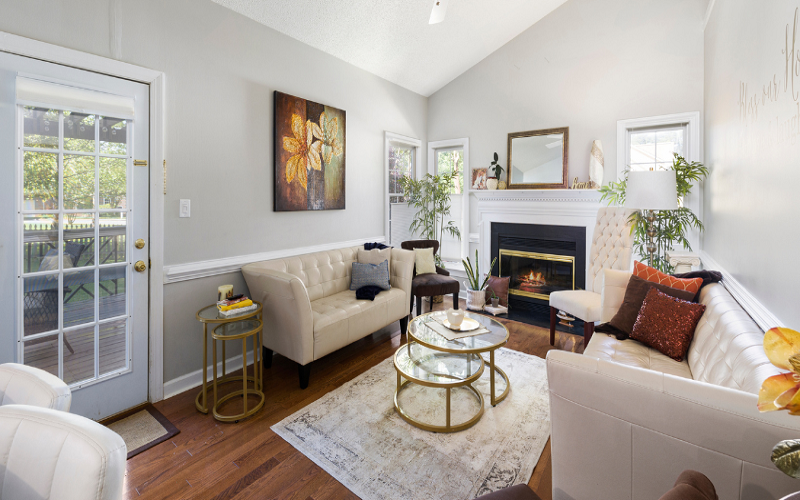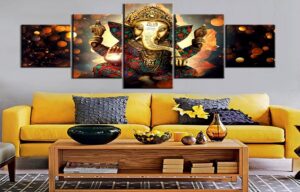Crafting Your Dream Haven: Crucial Advice for Choosing the Ideal Interior Design for Your House

Starting a home interior design project turns your living area into a private haven and is an exciting endeavour. To realise your ideal interior, however, takes significant thought and organisation. This thorough book explains the important considerations to make when selecting a home interior design, so that the end product is not only beautiful but also useful, cozy, and reflects your own style.
Recognising Your Own Style
You must be well aware of your own style before you can start learning about interior design. Spend some time investigating several design philosophies, from rustic and eclectic to minimalist and contemporary. Think back on the patterns, colours, and textures that speak to you. To see your tastes visually, think about making a Pinterest collection or a mood board. This self-examination will guarantee that the finished product really captures your personality and will also help you explain your concept to designers. Never forget that your house should be an extension of who you are, not an exact duplicate of a magazine spread or someone else’s idea.
Evaluation of Your Lifestyle Requirements
The interior design of your house ought to flow naturally from your way of living. As you create, take into account your family dynamics, interests, and everyday schedules. Perhaps you need a separate workplace if you work from home. For those who like hosting parties, an open-plan living space might be perfect. Young families may give safety-conscious arrangements and long-lasting materials top priority. Owners of pets want to think about flooring and materials that are suitable for them. When your design decisions complement your way of life, you not only create a visually appealing area but also one that improves your everyday activities.
Spending Astutely
A crucial first stage in the interior design process is to set a reasonable budget. Find out how much you’re ready to spend on remodeling your house, then divide the money across the various project components. Think about possible structural modifications, labor charges, and unforeseen expenditures in addition to the cost of furniture and décor. Putting up between 10 and 20 percent of your overall budget as a contingency reserve is a good idea. Recall that while high-quality products are often more expensive, over time their endurance may make them more economical. Keeping your financial capacity and your aspirations in balance can enable you to make wise choices and stay out of financial trouble while designing.
Architectural Opportunities and Restraints
Every property is different architecturally, which may either limit or improve your design options. Examine closely the structural components of your area, including the windows, doors, ceiling height, and arrangement of the rooms. These elements may affect anything from where to put furniture to what kind of lighting to use. But frequently, a limitation might be a design opportunity. For example, exposed beams might provide character to a contemporary design or an irregularly shaped space could become a comfortable reading nook. Complementing and enhancing the current structure of your house is ensured by knowing and working with its architecture.
Features and Flow
While style matters, your room’s utility should never be sacrificed. Think on how you move about your house and make sure your layout makes room flow and navigation simple. Examine storage options that maintain order in your area without compromising design. Smaller houses may benefit much from multipurpose furniture. Make sure furniture and décor are arranged well to prevent congested areas and to provide clear walkways. A well-planned house should improve your everyday quality of life in addition to its aesthetic appeal.
Lighting Concepts
The mood and usefulness of your room are both greatly influenced by the lighting in interior design. Think of a task, accent, and ambient lighting strategy combined in a tiered design. Maximising natural light may help rooms seem bigger and cozier, therefore it should be done whenever feasible. Consider how your lighting requirements could vary throughout the day and throughout the seasons. Systems of smart lighting may be flexible and energy-efficient. Remember the aesthetic value of lighting fixtures as well; they may be used as standalone ornamental components. Well-considered lighting design may greatly improve the atmosphere and functionality of your house.
Colour Psychology and Choosing a Palette
Your home’s general environment and your mood may be greatly influenced by the colours you pick. Learn how various colours may influence feelings and perceptions by delving into colour psychology. A room may be calmed down by cool tones like blues and greens, or energised by warm tones like reds and oranges. To guarantee a smooth flow between areas, think about developing a single colour scheme that runs throughout your house. Though do so carefully to prevent overpowering the area, don’t be hesitant to use striking accent colours. Recall that because lighting may have a big impact on how colours seem, colour selections should also include the natural light in each area.
Green and Sustainable Choices
Thinking about eco-friendly and sustainable solutions for your interior design is not only fashionable but also responsible in today’s ecologically concerned society. Search for décor and furniture constructed of recycled or sustainable materials. To lessen your carbon impact, think about energy-efficient lights and appliances. Improved indoor air quality may result from natural flooring choices like bamboo or cork as well as low-VOC paints. Repurposing or upcycling current objects may give your room personality and be good for the environment. Including sustainability into your design decisions can help the environment and make your home healthier for you and your family.
Conclusion
Selecting the ideal house interior design and fit-out services is a very personal and life-changing decision that calls for thorough analysis of a number of variables. Every element, from knowing your own taste and desires for a lifestyle to thinking about sustainability and future-proofing your design, is essential to create a beautiful, useful, and distinct environment. You lay the groundwork for a successful interior design project that will produce a house that feels really like your own by giving these important components some serious attention. Recall that the objective is to create a place that makes you feel happy, comfortable, and like you belong rather than perfection. Keeping these things in mind, you’re ready to start your interior design adventure and makeover your house into a place that reflects your own narrative.






